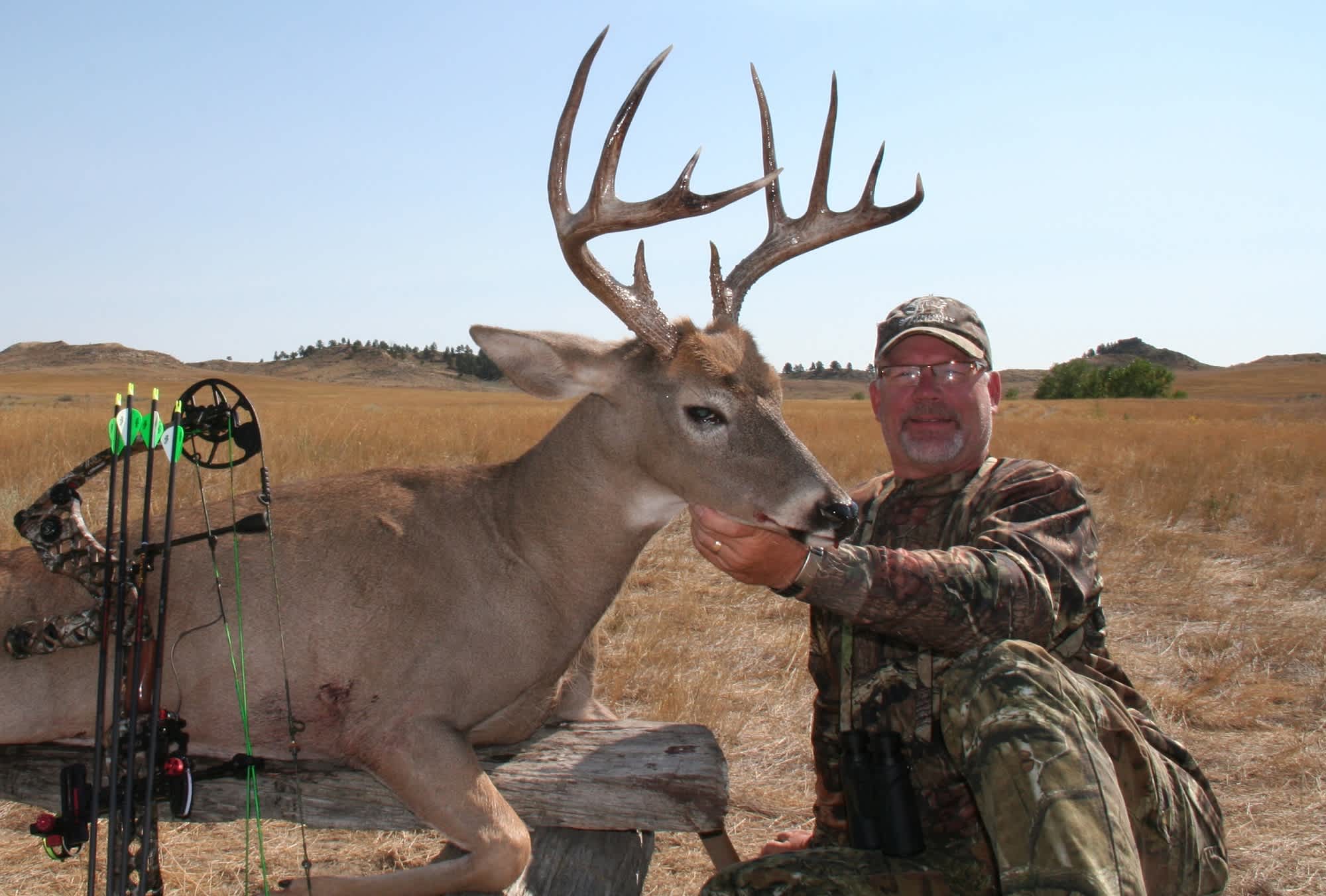Five Reasons Why You Should Hunt Western Whitetails
Bernie Barringer 09.04.13

For great hunting and unpressured whitetails, go West, young man!
When most hunters think about going out of state for a whitetail hunt, they usually think of the well-known destinations in the Midwest—you know, the states that get all the attention on outdoor TV. And there’s a perfectly good reason for that. Some Midwestern states have earned a reputation for producing outsized bucks with consistency.
But there are reasons, very good reasons in fact, to think about going farther west. I have had the pleasure of hunting in western Kansas, Montana, North Dakota, South Dakota, and soon I will add a couple more states to my list. Wyoming, Idaho, Colorado, Nebraska, and Washington all deserve consideration for their expanding whitetail populations. I love hunting whitetails in the West for many reasons, but here are my top five.

Early-season success
Western states have archery seasons that open before other states in the Midwest and East. Most of them open in late August or early September. When the guys back east are drooling over the bucks coming out into the fields at night, eyeballing them through their spotting scopes, you can be eyeballing the bucks through your bow-sight. The bucks are very patternable in the late summer and they don’t know they are being hunted until it’s too late. Feeding and bedding areas and the trails between them become quite predictable in late summer and early fall.
Bachelor groups are feeding in irrigated crop fields at this time of the year. They appear like clockwork each day and it is just a matter of getting in the right tree and waiting for your chance.
Another advantage of hunting early is the mild weather. Bugs can at times be a problem, but if you prepare accordingly, they are not going to ruin your hunt. Keep in mind that the arid Western states have fewer mosquitoes than you will find in the Midwest and East, so bugs are not as much of an issue. Warm, comfortable mornings and evenings on stand make for a pleasant hunt if you dress accordingly.
Buck velvet
Most every serious whitetail hunter has at some time or another thought that it might be cool to shoot a buck in velvet. The West offers several great opportunities to do just that. The velvet begins to shed in the first week of September, so if you show up for opening day in one of the Western states, you have a short window of opportunity to shoot a buck with fuzzy antlers. They do make a great mount and a nice conversation piece.

The pressure is off
Western whitetail deer are largely unpressured. In fact, throughout most of the West, they are considered vermin by farmers. They are numerous and they eat a lot of the crops. Most crops including alfalfa, soybeans, and corn are irrigated in the West because of the dry climate. The deer flock to these green fields and the landowners watch their crops being devoured evening after evening.
You can imagine that sets up a pretty fertile scenario for getting hunting permission. In many cases, it is as easy as tracking down the farmer and shaking his hand. Just a few words to prove that you are responsible, will close the gates, and not drive on the green fields will provide you with private access to a whitetail heaven.
Quantity and quality
The sheer number of whitetails in some areas of the West is staggering. Fields in the river bottoms often have deer herds numbering in the hundreds moving through them each evening. The bucks do not get huge, and if you are looking for a Boone & Crockett, your odds are better in southern Iowa than they are in southern Montana, but if you have a 140- to 150-class buck on your mind, the West has a lot of options.
If you find yourself in a treestand in the right location, you may have a dozen different bucks file by you in a single evening. These deer travel long distances from the bedding to the feeding areas each day. This leaves you a lot of options when considering places to waylay them in their daily travels.

Tags and licenses
Most Western states offer nonresident over-the-counter tags. That means you can show up and buy a deer tag at a license vendor and then go hunt. Many of them offer liberal doe permits in addition to a buck permit. On average the value of the permits is lower than the Midwestern states with the exception of Montana, which has suddenly become very proud of their whitetail tags. It’s $570 for a tag and you have to apply in the spring and see if you draw. Your other option is to buy a deer and elk tag combo for (gulp) $959 and then you can get a partial refund if you do not hunt elk, but it does give you a guaranteed whitetail tag.
Fortunately, Montana is the exception rather than the rule when it comes to obtaining tags. Most states offer nonresident tags for $200 to $300. Check out each state’s website and you will find that tags are relatively inexpensive and easy to get in most of these states.
There are a lot of great reasons to put a Western whitetail hunt on your to-do list. These are just a few, and I am sure you can think of even more. The time to get started planning your adventure is right now.
Follow Bernie’s bowhunting adventures on his blog, bowhuntingroad.com.

